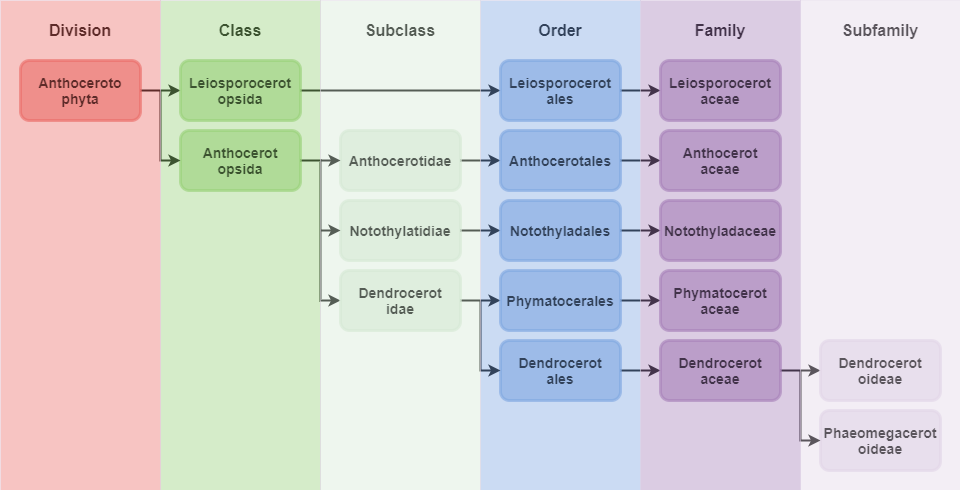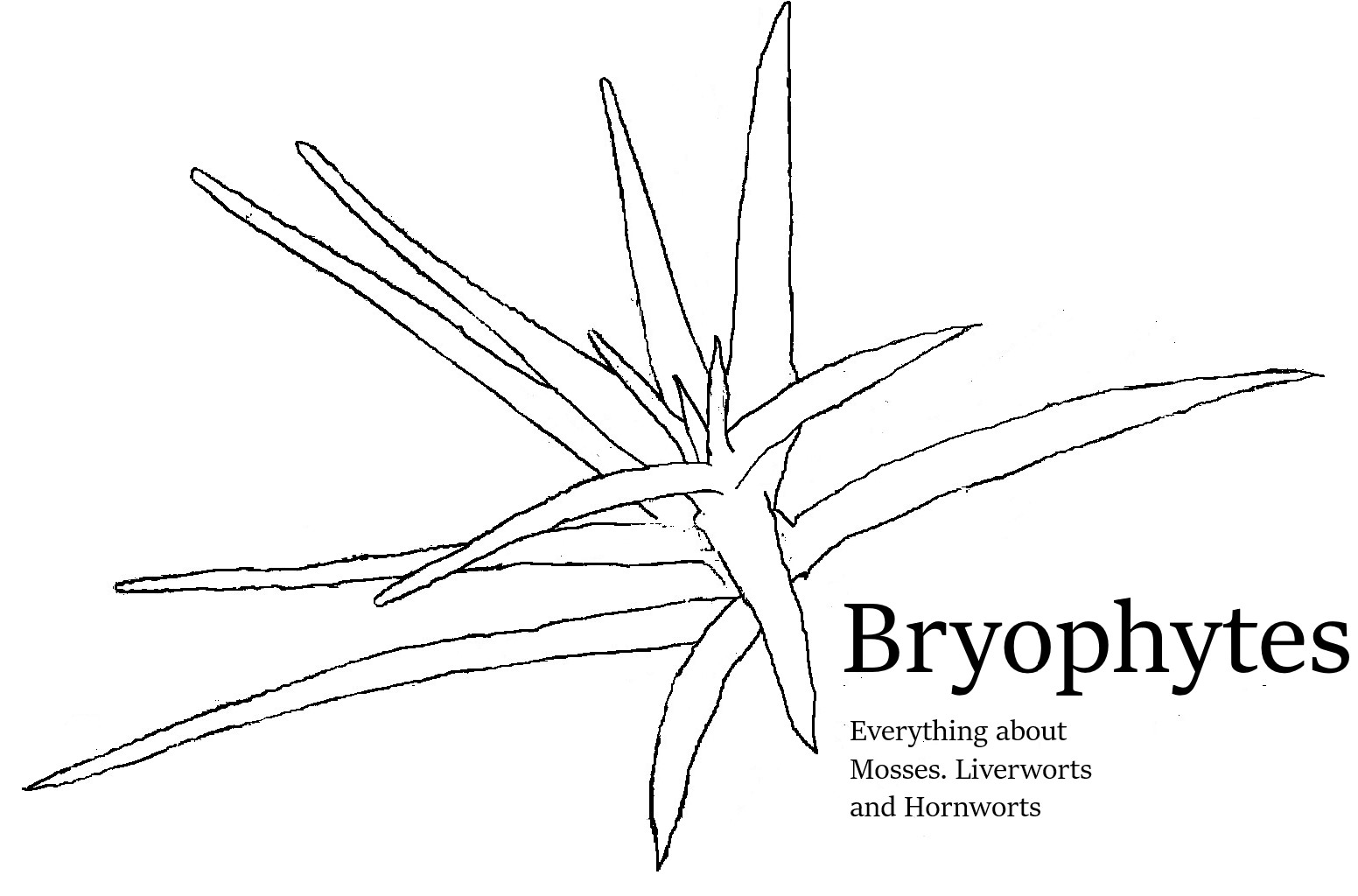Welcome to bryodex!
This part of my project aims at eventually creating an online "database" of all bryophytes of the world. It should contain information on morphological, anatomical, cytological, physiological, bio geographical properties of all taxons of bryophytes of the world as text, synoptical as tables, pictures, drawings and graphics. This will be the landing page, allowing quick navigation down to the family level of taxons as well as access to an index of used author abbreviations and an illustrated glossary of the used diagnostic terms. For a description of bryophytes in general, see page in compendium. For a more general account and explanation of morphological and physiological characteristics of the different divisions see the pages in the compendium. Systematic used is by Frey and Stech in Syllabus of Plant Families Part 3 Bryophytes and seedless Vascular Plants, 13th edition by Wolfgang Frey, Gebr. Borntraeger Verlagsbuchhandlung (2009)
The Subkingdom of Embryobionta
In the Kingdom of Eucarya, the organisms with a nucleus, the bryophytes are part of the subkingdom of Embryobionta Cronquist, Takht & W.Zimm. The subkingdom comprises of the recent monophyletic divisions of the Marchantiophyta, Bryophyta, Anthocerotophyta and Tracheophyta (which itself contains the lycophytes, ferns and seed plants).
| Systematics of Embryobionta, Simon Hofer, CC SA-BY 4.0 |
As illustrated above, the Charales are sister to all land plants, the Marchantiophyta to all other land plants and the Anthocerotophyta to the Tracheophytes. The brophytes themselves are a paraphyletic group. The split between Embryobionta and Charales occured in the middle ordovician, the bryophytic clades split off around the beginning of the silurian 439 mio years ago [1, p. 6-8].
Common feature of all Embryobionta is the maternal care for the embryo of the next generation [1, p. 8].
Systematics of Bryophyta Schimp.
The division of Bryophyta Schimp is separated from the other two divisions by their consistently leafy gametophytes, which arise from apical cells. The sporophyte usually has a seta, a capsule with a columella and a peristome, and stomata. Elaters are not found. The plastid and mitochondrium of the belpharoplast are located at the inner nuclear surface. Stray microtubules are found as well [1, p. 11]. For a detailed description of morphology etc. of the Division see the dedicated site [here].
Currently around 12 500 species are ascribed to this division. They are distributed in 3 subdivisions, 7 classes, 35 orders, 120 families and approximately 860 genera. The biggest family is the Pottiaceae, with around 1425 species in 83 genera. Ca. 30 genera consist of more than 100 species. 44 Families are monogeneric, 17 even monospecific. 310 genera are monospecific as well [1 p. 116].
The following graphic gives an overview of the taxons down to the rank of family in the division of Bryophyta. Each box is a link leading to a page dedicated to that taxon.
Systematics of Anthocerotophyta rothm. ex Stotler & Crand.-Stotler
The systeamtics of Anthocerotophyta is not the one from Frey and Stech from [1], but instead the one presented from Renzaglia et al. from [2]. The reason is that the later one incorporates more molecular data.
The division comprises of around 150 species in 14 genera. [2]

Literature
[1] Engler, Adolf; Frey, Wolfgang; Stech, Michael; Fischer, Eberhard (2009): Bryophytes and seedless vascular plants. 13. ed. Stuttgart: Bornträger (Syllabus of plant families, = Adolf Engeler's Syllabus der Pflanzenfamilien ; Pt. 3).
[2] Goffinet, B. u. Shaw, A. J.: Bryophyte biology. Cambridge, New York: Cambridge University Press 2009
